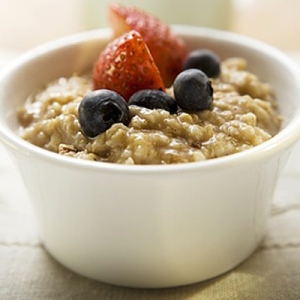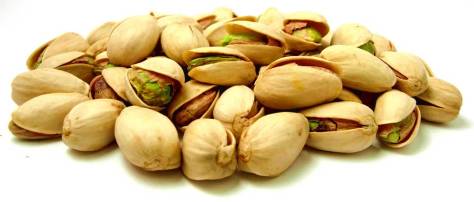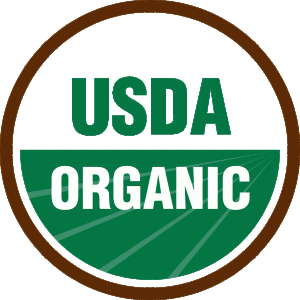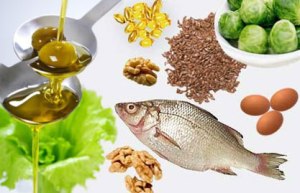Can eating certain foods change your mood? Which foods affect us negatively? Which foods make us happy? Do we make good food choices when we are sad?

Can food alter our mood? Which foods make us happier? Which foods make us sad? 20 Powerful Food Mood Boosters!
Hippocrates is credited to saying, “Let food be thy medicine, and medicine be thy food.” People have known about the emotional, psychological and physical healing effects of foods since the beginning of time. But does scientific research back up these findings?
For the past 100 years, nutrition research has evolved dramatically with animal and human trials showing how certain foods can change the brain structure, effect health and healing and human and animal physiology. We’ve discovered that foods that directly influence brain neurotransmitter systems have the greatest effect on our moods, expectations, and perceptions.
“What you eat can affect your mood and how well your brain works,” says Judith Wurtman, Ph.D., a former Massachusetts Institute of Technology research scientist and coauthor of The Serotonin Power Diet
HOW DO CARBOHYDRATES BOOST OUR MOOD?
People tend to eat foods high in carbohydrates when they are depressed and seeking a lift in their mood.

High fiber foods, like oatmeal, can keep serotonin flowing steadily and prevent mood swings.
According to Dr. Wurtman, in order to have a positive mood effect from eating foods, we should eat carbohydrates that are rich in fiber — like oatmeal, whole-wheat pasta or beans — so that your body will absorb the carbohydrates slowly, keeping serotonin flowing steadily; otherwise, we will digest the food too quickly and cause a mood swing boost followed by another emotional low.
Larry Christensen (1992), concluded in Effects of Eating Behavior on Mood: A Review of the Literature, that ” individuals experiencing a negative mood state arising from disorders ranging from tobacco withdrawal to premenstrual symptoms make use of carbohydrate ingestion, especially simple carbohydrates, to provide a temporary lifting of mood. However, other evidence suggests that some individuals may obtain a more permanent control of their negative mood state by eliminating simple carbohydrates from their diet. While the literature is consistent in demonstrating that carbohydrate consumption can alter a negative mood state, the underlying mechanism mediating this relationship is unknown.”

Dark chocolate is high in magnesium and can reduce depression and anxiety.
WHAT FOODS OR FOOD INGREDIENTS HELP WITH DEPRESSION?
Many people are who are depressed and lethargic, are unaware that they are dehydrated and lack sufficient daily intake of water. Dehydration leads to fatigue, depression, confusion, and altered mood. Increasing daily consumption of water improves memory, stamina and positive outlook.
A primary food that has been shown to boost the mood is dark chocolate which is high in magnesium. Magnesium calms muscles and reduces anxiety. Dark chocolate also contains tryptophan, which helps reduce symptoms of depression. Blue potatoes have powerful antioxidants known as anthocyanins. Anthocyanins provide neuro-protective qualities, and help to reduce the brain inflammation associated with depression.
Honey contains kaempferol and quercetin, which also helps to prevent depression by reducing inflammation in the brain.
WHICH FOOD HELP TO ENERGIZE THE BRAIN?

Spinach is helpful in raising energy and preventing mood swings.
Spinach is high in folic acid, a B vitamin, and also high in antioxidants that are helpful in raising energy and preventing mood swings. Probiotics found in Greek yogurt, for example, can boost the mood and the immune system. Tomatoes also help the brain and boost the mood with its high level of lycopene. Lycopene is an antioxidant that fights brain inflammation. Eggs contain moderate-to-large amounts of Zinc, Vitamin B, Iodine, Omega-3 Fatty Acids, and protein, and keep you energized. Research suggests that flavonoids in blueberries may improve memory, including reasoning, decision making, verbal and numerical problem solving abilities and general cognitive function. Research studies suggest that consuming flavonoids found in blueberries may help provide protection against disorders such as Alzheimer’s and Parkinson’s Disease. Walnuts, salmon and other foods high in Omega-3 fatty acids help the brain.

Fresh vegetable or fruit juices provide necessary enzymes and nutrients to energize the body.
Juiced fresh, raw fruits, berries, or vegetables give an energy boost and feeling of mental alertness and exhilaration. Fresh vegetable and fruit juices are an easy way for everyone to get essential enzymes, minerals, vitamins and nutrients that people may not normally get in a daily diet. Raw juices with dark leafy greens are loaded with antioxidants that can help detoxify, revitalize and restore depleted energy.

Certain foods have a calming effect on the body and aid in reducing depression. Omega-3 fatty acids may boost the mood.
DO OMEGA 3 FATTY ACIDS DECREASE DEPRESSION?
Much research has been conducted in recent years on the benefits of eating foods high in Omega 3 fatty acids, but do these foods affect the mood? According to results of a study presented on Mar. 4, 2006 by University of Pittsburgh School of Medicine researchers at the 64th Annual Scientific Meeting of the American Psychosomatic Society in Denver, Omega-3 polyunsaturated fatty acids may influence mood, personality and behavior. Researchers studied 106 healthy volunteers, and found that participants who had lower blood levels of omega-3 polyunsaturated fatty acids were more likely to report mild or moderate symptoms of depression, a more negative outlook and be more impulsive. Conversely, those with higher blood levels of omega-3s were found to be more agreeable. The study was conducted by Dr. Sarah Conklin, and others, and was funded by the National Heart, Lung and Blood Institute of the National Institutes of Health (NIH),

Foods rich in Omega 3 Fatty acids include salmon, walnuts, olive oil, flax seed, brussels sprouts and broccoli.
Some foods which are high in Omega 3 fatty acids are: flaxseed oil, fish oil, walnut oil, salmon, mackerel, chia seeds, sardines, radish seeds, fresh basil, walnuts, brussels sprouts, and broccoli. Sometimes other foods such as cereals, bread, yogurt, orange juice, milk, and eggs are fortified with omega-3 fatty acids. Comparisons were made by analyzing levels of omega-3 fatty acids in participants’ blood and comparing that data to the participants’ scores on three accepted tests for depression, impulsiveness and personality. This study by Dr. Sarah Conklin, was co-authored by Jennifer I. Harris, M.D., psychiatry resident, department of psychiatry, Brown University; Stephen B. Manuck, Ph.D., University Professor of Health Psychology and Behavioral Medicine, department of psychology, University of Pittsburgh; Joseph R. Hibbeln, M.D., chief of outpatient clinic, Lab of Membrane Biophysics and Biochemistry, National Institute on Alcohol Abuse and Alcoholism, NIH; and Matthew F. Muldoon, M.D., associate professor, department of medicine, University of Pittsburgh School of Medicine.

Chamomile tea is helpful in calming the nerves and inducing sleepiness.
WHICH FOODS ARE CALMING AND REDUCE STRESS?
Chamomile can be very calming as is Valerian root. Both are helpful in calming the nerves and inducing sleep. Green tea is high in theanine, an antioxidant which has a calming effect. Avocados contain serotonin, a “feel-good” neurotransmitter.
For many years serotonin has been known to play an important role in calming the body and in inducing sleep. However, according to a study by Portas CM, Bjorvatn B, Ursin R., (2000), serotonin plays a dual role, affecting both the sleeping and waking cycle and can also be a cause of insomnia or wakefulness. Researchers conclude, “The apparent inconsistency between an inhibitory and a facilitatory role played by serotonin on sleep has at least two possible explanations. On the one hand serotonergic modulation on the sleep/wake cycle takes place through a multitude of post-synaptic receptors which mediate different or even opposite responses; on the other hand the achievement of a behavioral state depends on the complex interaction between the serotonergic and other neurotransmitter systems.”

Students eating pistachios had reduced stress before a math test
A study using pistachios showed that 1 1/2 oz of these nuts reduced the effects of stress on people taking a math test in a Penn State University study, “Effects of Pistachios on Cardiovascular Responses to Stress in Type 2 Diabetes.”
“Participants still found the test to be stressful, but their blood pressure response was lower than when they took the same test while consuming a low-fat diet,” says study author Sheila West, Ph.D.

More people watching sad movie preferred popcorn over grapes. People watching the happy movie consumed more grapes and less popcorn.
DO PEOPLE CHOOSE UNHEALTHY FOODS WHEN SAD OR FRIGHTENED?
Brian Wansink, the John S. Dyson Professor of Marketing, Applied Economics and Management at Cornell, Nitika Garg of the University of Mississippi and J. Jeffrey Inman of the University of Pittsburgh, conducted a study which was published in the January 2007 issue of the Journal of Marketing, The Influence of Incidental Affect on Consumers’ Food Intake. The study found that people eat more less-healthy comfort foods when they are sad. Participants either watched a happy or a sad movie and were provided with the choice of eating buttered popcorn or seedless grapes during the movie. The group watching the happy movie consumed significantly more grapes and less popcorn than the group watching the sad movie.
“While each of us may look for a comfort food when we are either sad or happy, we are likely to eat more of it when we are sad,” Wansink concluded.
The researchers found that the sad people with no nutritional information ate twice as much popcorn as those feeling happy. Additionally, when participants were provided with nutritional information, the sad movie attendees consumed less popcorn than the happy movie attendees and the happy group didn’t change their eating habits and continued to eat more grapes.
Researchers Schotte, Cools, and McNally came to similar conclusions in a 1990 study. Sixty women were classified as either restrained or unrestrained eaters on the basis of their responses to the Revised Restraint Scale, and exposed to frightening films. Subjects classified as “high restraint” exposed to the frightening film ate more than did equally restrained subjects exposed to a neutral film or low restraint subjects exposed to either film.

Yogurt can be beneficial in reducing depression and boosting the mood.
Foods have been shown to have powerful and even addictive qualities because of their effects on mood. Haddock and Dill (2000) in an article reviewing of the psychoactive effects of food and mood on obesity and eating disorders, concluded,
“The addictions model of obesity claims that individuals gain excess weight due to their dependence on and inability to control the intake of certain food substances. The dependence and lack of control over these food substances is undergirded by, according to the addictions model, the psychoactive properties of foods. The article reviews the literature on the purported psychoactive effects of foods and concludes that although, under certain circumstances, some food substances may have subtle effects on mood and behavior, the effects of food are quite different from that of psychoactive drugs such as nicotine and alcohol. Therefore, the food addictions model is unlikely to provide a fruitful paradigm for understanding the complex problem of obesity.”
References
Christensen L, Effects of Eating Behavior on Mood: A Review of the Literature, International Journal of Eating Disorders, John Wiley & Sons, 14 September 1992.
Gebauer SK, West SG, Kay CD, Alaupovic P, Bagshaw D, Kris-Etherton PM. Effects of pistachios on cardiovascular disease risk factors and potential mechanisms of action: a dose-response study. Am J Clin Nutr. 2008 Sep;88(3):651-9.
Haddock CK, Dill PL, The Effects of Food on Mood and Behavior: Implications for the Addictions Model of Obesity and Eating Disorders, Drugs & Society, Volume 15, Issue 1-2, 2000
West SG, Effects of Pistachios on Cardiovascular Responses to Stress in Type 2 Diabetes, Penn State University, General Clinical Research Center, University Park, Pennsylvania, United States, 16802-6501
Wurtman JJ. and Frusztajer NT., The Serotonin Power Diet, Rodale Books; 1 edition, December 22, 2009
_________________________________
 This article is written by Jean Voice Dart, M.S. Special Education from Illinois State University. Jean is a published author and has written hundreds of health articles as well as hosting a local television program, “Making Miracles Happen.” She is a Registered Music Therapist, Sound Therapist, and Master Level Energetic Teacher, and is the Executive Director, founder and Health and Wellness Educator of the Monterey Bay Holistic Alliance. The Monterey Bay Holistic Alliance is a registered 501 (c) 3 nonprofit health and wellness education organization. For more information about the Monterey Bay Holistic Alliance contact us or visit our website at www.montereybayholistic.com.
This article is written by Jean Voice Dart, M.S. Special Education from Illinois State University. Jean is a published author and has written hundreds of health articles as well as hosting a local television program, “Making Miracles Happen.” She is a Registered Music Therapist, Sound Therapist, and Master Level Energetic Teacher, and is the Executive Director, founder and Health and Wellness Educator of the Monterey Bay Holistic Alliance. The Monterey Bay Holistic Alliance is a registered 501 (c) 3 nonprofit health and wellness education organization. For more information about the Monterey Bay Holistic Alliance contact us or visit our website at www.montereybayholistic.com.
Disclaimer: The Monterey Bay Holistic Alliance is a charitable, independent registered nonprofit 501(c)3 organization and does not endorse any particular products or practices. We exist as an educational organization dedicated to providing free access to health education resources, products and services. Claims and statements herein are for informational purposes only and have not been evaluated by the Food and Drug Administration. The statements about organizations, practitioners, methods of treatment, and products listed on this website are not meant to diagnose, treat, cure, or prevent any disease. This information is intended for educational purposes only. The MBHA strongly recommends that you seek out your trusted medical doctor or practitioner for diagnosis and treatment of any existing health condition.
0.000000
0.000000





















 is written by Hang Pham. Hang Pham is a Monterey Bay Holistic Alliance Health and Wellness Educator. Hang Pham was born in Hoc Mon, Vietnam. She came to America in 1994, becoming a U.S. citizen in 2011. Hang graduated from Seaside High School with diploma and received her AA in General Studies from Monterey Peninsula College in 2011. She received her BA in Collaborative Health and Human Services from California State University Monterey Bay (CSUMB) in 2012. In addition to working as a volunteer staff with the
is written by Hang Pham. Hang Pham is a Monterey Bay Holistic Alliance Health and Wellness Educator. Hang Pham was born in Hoc Mon, Vietnam. She came to America in 1994, becoming a U.S. citizen in 2011. Hang graduated from Seaside High School with diploma and received her AA in General Studies from Monterey Peninsula College in 2011. She received her BA in Collaborative Health and Human Services from California State University Monterey Bay (CSUMB) in 2012. In addition to working as a volunteer staff with the 



















 Polyunsaturated fats such as safflower, cottonseed and corn oils,and seafood. Monounsaturated fats are found in avocados, nuts and seeds, such as flax seeds. People following traditional Mediterranean diets that are high in foods containing monounsaturated fats like olive oil, tend to have a lower risk of
Polyunsaturated fats such as safflower, cottonseed and corn oils,and seafood. Monounsaturated fats are found in avocados, nuts and seeds, such as flax seeds. People following traditional Mediterranean diets that are high in foods containing monounsaturated fats like olive oil, tend to have a lower risk of 

 any research studies have shown that saturated fats, like lard, full-fat dairy products and fatty animal proteins, can increase risks of heart disease, high cholesterol and some cancers, such as colon cancer. However, recent studies contradict earlier studies. More research may be needed to determine the long-term effects eating a regular diet high in saturated fats. It’s generally thought that it is best to limit the amount of saturated fats and replace the saturated fats with monounsaturated or polyunsaturated fats.
any research studies have shown that saturated fats, like lard, full-fat dairy products and fatty animal proteins, can increase risks of heart disease, high cholesterol and some cancers, such as colon cancer. However, recent studies contradict earlier studies. More research may be needed to determine the long-term effects eating a regular diet high in saturated fats. It’s generally thought that it is best to limit the amount of saturated fats and replace the saturated fats with monounsaturated or polyunsaturated fats.



 probably won’t list, “trans fats,” or might list trans fats as zero, but if the label lists “partially hydrogenated oils,” this means it contains trans fats, plain and simple.
probably won’t list, “trans fats,” or might list trans fats as zero, but if the label lists “partially hydrogenated oils,” this means it contains trans fats, plain and simple.
